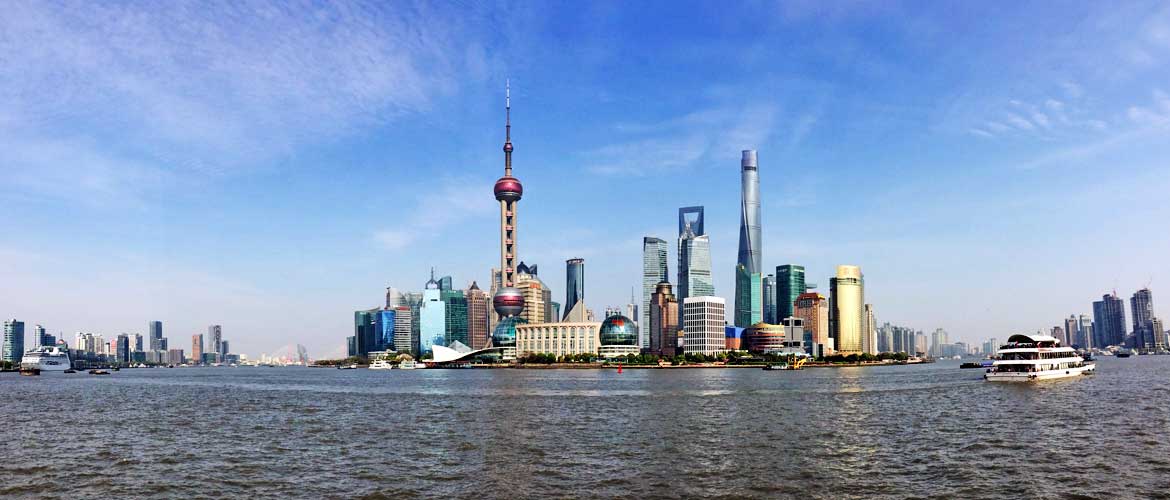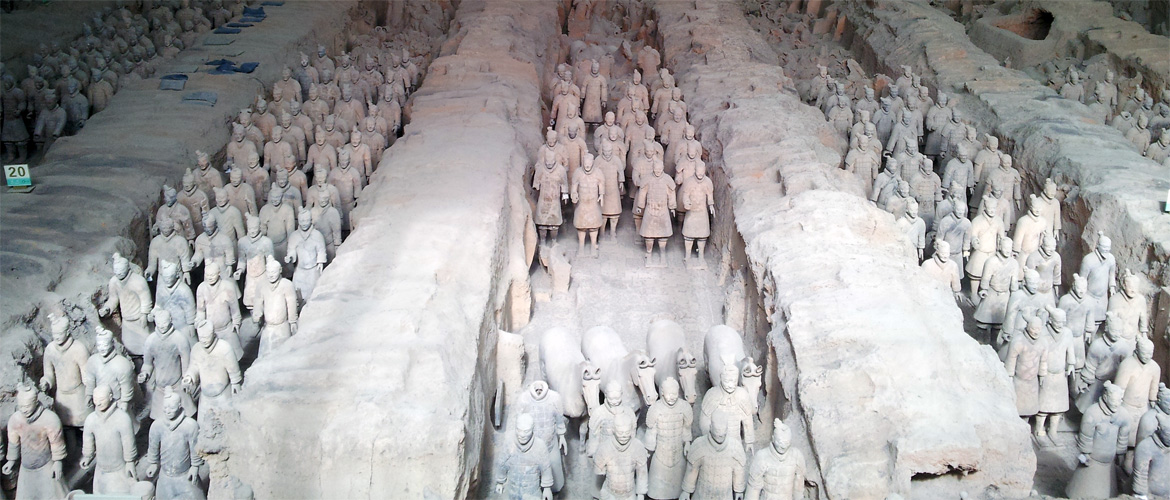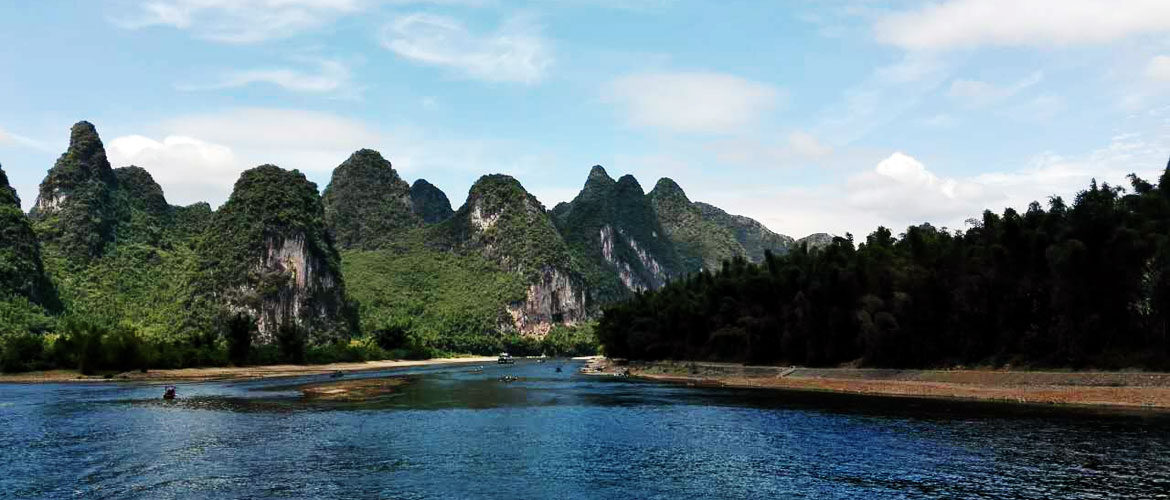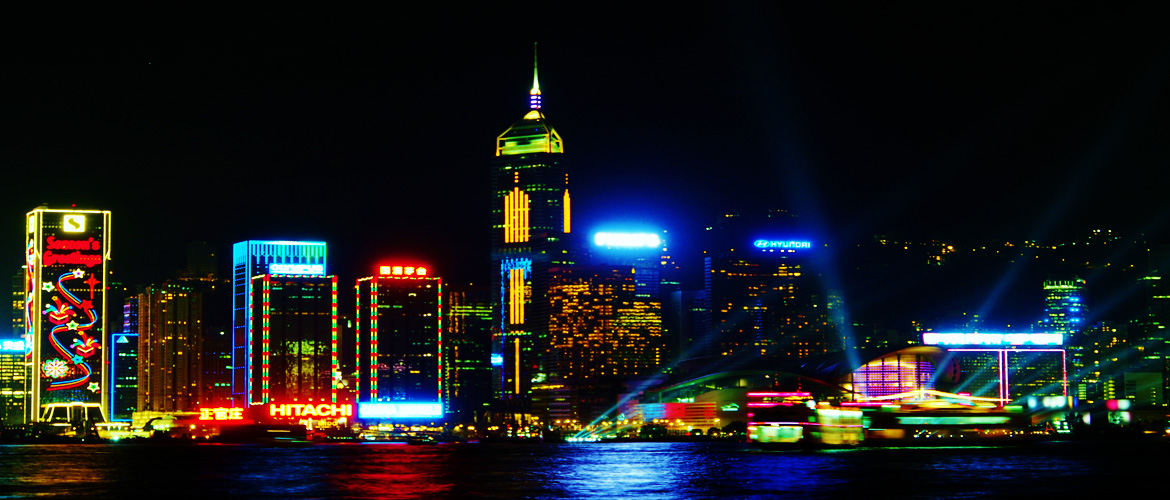Shanghai – Suzhou – Tongli (water town) – Wuhan – Yangtze Cruise – Chongqing – Xian – Beijing
Join us on this grand tour of China to experience the country’s rich history, stunning landscapes, and diverse cultures. From the iconic Great Wall to the serene beauty of the Yangtze River, each stop reveals a new facet of China’s story. Engage with locals, taste authentic cuisine, and witness traditions that have endured for millennia. Whether you’re wandering the bustling streets of Shanghai or the peaceful countryside, every moment is an opportunity to connect with this extraordinary culture.
Important Features
- Outstanding guides handpicked by owners of Laurus Travel
- Small group size – maximum 20 guests per group
- Inter-city travel by high speed train
- No annoying forced shopping of any kind
- Quality meals at non-tourist restaurants
- Unlimited supply of bottled water during group activities
- Outside cabin on or above bridge deck for Yangtze cruise
- Complimentary Wi-Fi on cruise ship and in all hotels
- Great Wall visit at Mutianyu with cable car rides included
Options Available
- Day trip to Dazu Rock Carvings from Chongqing
- Tang Dynasty cultural show with dinner in Xi’an
- Peking Opera show with dinner in Beijing
Meal Code: B = breakfast / L = lunch / D = dinner

Day 1/Thu: Departing for Shanghai
Depart from a city of your choice and lose a day upon crossing the International Date Line.
Day 2/Fri: Arrival in Shanghai
Meet the driver on arrival for transfer to the hotel. You’ll have the balance of the day at leisure. The guide will get in touch with you tonight.
Day 3/Sat: Shanghai (B/L/D)
With a population of 24.9 million (2021), Shanghai is China’s biggest city, which delights the visitor with its futuristic skyline and historical landmarks.
Following the tour orientation we visit Jade Buddha Temple located in an old neighbourhood, the famous waterfront promenade known as the Bund, and the Yu Garden in the old town centre. We wrap up the day with a drive through the glitzy financial district of Lujiazui on the opposite side of the Bund across Huangpu River.
Day 4/Sun: Shanghai (B)
Free day to explore on your own. We recommend Shanghai Museum and the Urban Planning Exhibition Center nearby. Shanghai Museum is frequently cited by visitors as one of the best of its kind in China, it is also a great place to explore on your own.
Day 5/Mon: Shanghai – Suzhou (B/L)
After a leisurely breakfast we drive 85 km to Suzhou. Ancient Suzhou is most famous for its gardens, canals and silk industry. In the late 13th century a Venetian named Marco Polo visited Suzhou and was very impressed by what he saw. He vividly described the prosperous silk industry and dubbed Suzhou “Venice of the East” due to the small waterways crisscrossing the city.
Our full-day schedule takes in historic Tiger Hill, Humble Administrator’s Garden, Suzhou Museum (designed by I. M. Pei), North Pagoda and a short canal cruise. Those interested in shopping can ask to be dropped off at the Silk Embroidery Research Institute or a filature (silk reeling mill) on the way back to the hotel.
Day 6/Tue: Suzhou – Tongli – Suzhou (B/L)
We set off for Tongli following breakfast. Located 25 km south of Suzhou, ancient Tongli is renowned for its canal system intersecting the town. After lunch we return to Suzhou and have the remainder of the day at leisure.
Day 7/Wed: Suzhou – Wuhan (B/L)
This morning we board the bullet train for Wuhan, capital of Hubei Province and arrive around lunchtime.
Afternoon sightseeing includes the 1911 Revolution Museum and the historical Hubei Provincial Assembly Building nearby. If time allows, we’ll stop by a food market.
Day 8/Thu: Wuhan – Yichang (B/L/D)
This morning we visit Hubei Provincial Museum. If we are lucky, we may get to watch a live performance featuring a set of bronze chime bells replicated from originals made two and half millennia ago. We then enjoy a leisurely stroll through the scenic East Lake Park nearby.
After lunch we ride the high-speed train to Yichang, where we board the Yangtze cruise ship following dinner.
Day 9/Fri: Yangtze Cruise (B/L/D)
At 6,380km the Yangtze is the longest river in China and the third longest in the world after the Nile and the Amazon. The most impressive section of the Yangtze is the 119km stretch collectively known as the Three Gorges (Xiling, Wu and Qutang).
Before sailing through Xiling (41km), the deepest of the Three Gorges, we embark on an excursion to the Three Gorges Dam at Sandouping. The Three Gorges Dam is the largest hydroelectric dam in the world and you’ll hear all about it from the local guide.
Day 10/Sat: Yangtze Cruise (B/L/D)
This morning we transfer to a smaller vessel for a relaxing excursion through the attractive gorges of Goddess Stream. Depending on river conditions, this may be substituted with an excursion to Shennong Stream.
Admire nature’s grandeur while passing through the spectacular Wu Gorge (45km) and Qutang Gorge (8km).
Day 11/Sun: Yangtze Cruise (B/L/D)
Today’s shore excursion is a visit to Shibaozhai – an impressive wooden pagoda built on a cliff overlooking the Yangtze. Depending on river conditions, a visit to a relocation village may be provided instead. This is one of the many such villages built for locals affected by the construction of the Three Gorges Dam.
Day 12/Mon: Chongqing (B/L)
Our Yangtze cruise concludes in Chongqing this morning.
Chongqing is one of the four direct-administered municipalities under the Central People’s Government, along with Beijing, Shanghai, and Tianjin. It is a sprawling municipality at the confluence of the Yangtze and Jialing rivers with a resident population of over 30 million with the majority of them living suburban towns and countryside making the city more like a Chinese province instead of a megalopolis.
Chongqing served as the wartime capital for the Republic of China (ROC) during the Second Sino-Japanese War (1937–1945). On 14 March 1997, the current municipality was separated from the surrounding province of Sichuan, with the goal of furthering development in the central and western parts of the country.
Chongqing is a major tourist destination in southwest China. In the city center, the large, domed Great Hall of the People complex stands above pedestrianized People’s Square. On the other side of the square, the Three Gorges Museum features artifacts from the construction of the Three Gorges Dam as well as ancient art.
Our sightseeing today takes in People’s Square, Stillwell Museum, and Ciqikou – a historical waterfront district once known for its porcelain production during the Ming and Qing dynasties.
Day 13/Tue: Chongqing (B)
Free day to explore on your own. We highly recommend the Three Gorges Museum, Chongqing Zoo (22 giant pandas), and popular Hongya Dong – a commercial complex with restaurants and shops offering all kinds of food and souvenirs.
Optional Day Trip to Dazu Rock Carvings
The group of Dazu Rock Carvings, a UNESCO World Heritage Site, lies about 120 kilometres to the northwest of downtown Chongqing. Here, on steep hillsides are an exceptional series of five clusters of rock carvings dating from the 9th to 13th centuries. The largest cluster at Beishan contains two groups along a cliff face stretching for around 300 metres. These images depict themes of Tantric Buddhism and Taoism. Inscriptions give insight to the history, religious beliefs, dating and the identification of historical figures. Representing the pinnacle of Chinese rock art, these well-preserved carvings are known for their grand scale, aesthetic quality and rich diversity of subject matter.
The optional excursion including guide service, admission charges, private transportation and lunch can be arranged for US$185 per person subject to a minimum of 4 participants.
Day 14/Wed: Chongqing – Xi’an (B/L)
After breakfast we board the high-speed train for Xi’an – eastern terminus of the legendary Silk Road and one of the ancient capitals of China. The five-hour journey is a fantastic way to enjoy the immense beauty of the lush green terrains of soaring peaks and deep valleys.
Our afternoon sightseeing in Xi’an takes in the ancient City Wall and the Muslim quarter.
The wall, declared national treasure by the State Council in 1961 under the premiership of Zhou Enlai, was started in 1370 during the Ming Dynasty, encircling an area of 14 square kilometres. The wall runs 13.7 kilometres long and measures 12 metres in height and 15 to 18 metres in thickness at the base.
The Muslim quarter is anchored by the historical Grand Mosque which itself is surrounded by a huge market selling all kinds of food, spices, arts and crafts. One thing particular about this mosque worth mentioning is that, unlike most mosques in Middle Eastern or Arab countries, this one is completely Chinese in its architectural style; it has neither domes nor traditional minarets.
Day 15/Thu: Xi’an (B/L)
Morning visit to the Terracotta Warriors and Horses Museum. Built on the excavation site, the museum is located 30km east of the city. Designed to follow the first emperor of the Qin Dynasty (221-206 BC) into eternity, the Terracotta Army represents one of the greatest archeological discoveries of the 20th Century.
Afternoon at Shaanxi Provincial Museum. The modern, well-organized museum was completed in 1992 and traces the history of Xian from prehistory to Qing dynasty (1644-1911). The extensive galleries and exhibitions offer the visitor an excellent introduction to the area that greatly improves understanding of the numerous historical sites in and around the city.
Optional Tang Dynasty Music & Dance Show
The show may be offered as an option if available. The price is US$95 per person including ticket for the show, dinner & subway fares between the hotel and theatre. This price requires a minimum of 4 participants to be valid.
Day 16/Fri: Xi’an – Beijing (B)
Depart for Beijing after breakfast. Depending on seat availability, the journey by high-speed train can take anywhere between 4 hours 17 minutes to 5 hours 17 minutes. If you forget to grab some snacks to eat on the train, you may buy hot boxed lunches on the train. Beer, soft drinks, bottled water and coffee are also available on the train.
Transfer to the hotel on arrival and have the balance of the day at leisure. If you wish to do some sightseeing after hotel check-in, please ask your guide for recommendations.
Beijing, China’s capital, is a major cultural and educational hub with a population of 22 million. Known for its opulent palaces, temples, and historic walls, it is the country’s most visited city.
Day 17/Sat: Beijing (B/L/D)
We begin our sightseeing today at the Forbidden City. Officially known as the Palace Museum, the Forbidden City was the place where the emperors of the Ming (1368-1644) and Qing (1644-1912) dynasties lived and carried out their administration. Construction of the Forbidden City took 14 years (1406-1420) to complete. The complex consists of 980 buildings and covers 72 hectares or 180 acres. It exemplifies traditional Chinese palatial architecture and has influenced cultural and architectural developments in East Asia and elsewhere.
Tian’anmen Square comes next. Located in the heart of Beijing, the square measures 880 metres from north to south and 500 meters from east to west. Said to be the largest public plaza in the world, Tian’anmen Square has the capacity to hold one million people. The imposing Tian’anmen Tower sits at the north end of the square while the Monument to the People’s Heroes dominates the centre. The square is flanked by The Great Hall of the People (west) and the National Museum (east). Chairman Mao’s Mausoleum and Qianmen (Front Gate) are located in the south of the square.
Afternoon sightseeing takes place at the Temple of Heaven. Situated in southeastern Beijing, the Temple of Heaven is China’s largest extant sacrificial temple where, during the Ming and Qing Dynasties, the emperors conducted the elaborate and most exalted sacrifices addressed to “the Supreme Ruler of the Universe.” Construction of the temple started in 1406, during the reign of the Ming Emperor Yongle, and took 14 years to complete. The temple was expanded under the Qing emperors Qianlong (1736-1796) and Jiaqing (1796-1820). Occupying 2.73 square kilometres (roughly 1,700 by 1,600 metres), the area of the Temple of Heaven is more than twice that of the Forbidden City.
The famous Hongqiao Pearl Market, the largest pearl market in the world, is right across the street from the Temple of Heaven. Recommended by numerous guidebooks for freshwater pearls, Hongqiao teems with domestic and international shoppers. If you are interested, please ask the guide to drop you off there. However, you’ll need to get back to the hotel by taxi, which costs less than 10 US dollars.
Today we enjoy a delicious dinner at a popular Peking Roast Duck restaurant.
Day 18/Sun: Beijing (B/L)
After an early breakfast we embark on a full-day excursion to the legendary Great Wall at Mutianyu, 75 km northeast of the city.
Zigzagging over 6,000 kilometres from east to west along undulating mountains, the Great Wall was built to hold off tribal invaders from the north. As history shows, the Wall failed the Chinese rulers miserably, especially in the case of Kublai Khan whose cavalrymen swept across China from the Mongolian steppe, thus the beginning of the Yuan Dynasty (1279-1368).
Construction of the earliest sections of the Wall started in the 7th century BCE. A major renovation started with the founding of the Ming Dynasty in 1368 and took 200 years to complete. The wall we see today in Beijing is almost exactly the result of this effort.
Day 19/Mon: Beijing (B/L)
We begin our sightseeing today with a visit to a traditional hutong neighbourhood. Hutong refers to an ancient alleyway with siheyuan or ”4-sided courtyard house” on both sides. The name hutong dates back to the Yuan Dynasty (1279 – 1368 CE). According to some experts, the word originated from the Mongolian language, in which it is pronounced as hottog and means “well.” In ancient times, people tended to gather and live around wells. Therefore, the original meaning of hutong should be “a place where people live around”.
Next on our schedule is the Summer Palace, a well preserved UNESCO World Cultural Heritage Site. The imperial resort was first named Garden of Clear Ripples, which was burnt down by the allied forces of Great Britain and France in 1860 at the end of the Second Opium War (often referred to as the Arrow War by the British). Reconstruction started 25 years later and was completed in 1895 when the name was changed to Yi He Yuan (Garden of Good Health and Harmony). The design gives prominence to Longevity Hill, as well as Kunming Lake south of the hill. The sprawling complex covers an area of 290 hectares and the buildings inside consist of over 3,000 bays.
Free afternoon to explore on your own. Our recommendations include Jingshan Park behind the Forbidden City and Lama Temple.
Jingshan Park was originally part of the Imperial Palace serving the royal families as a convenient site for farming, recreation and ancestor worshipping. The man-made hill (46 metres above ground, 89 metres above sea level) overlooks the Forbidden City and provides a great spot for bird’s-eye view of the surrounding area.
Lama Temple was built in 1694 as residence of Prince Yong, one of the sons of Emperor Kangxi. After Prince Yong ascended the throne as Emperor Yongzheng in 1722, half of his former residence was turned into a lamasery – a monastery for monks of Tibetan Buddhism.
Optional Peking Opera Show
This may be offered as an option subject to availability. If offered, the cost per person would be US$115 including dinner and transportation by taxi. The price requires a minimum of 4 participants to be valid.
Day 20/Tue: Returning Home (B)
Your tour ends this morning. Transfer to the airport any time for return flight. The guide will arrange your hotel pick-up time.
Important Reminder
The Yangtze cruise schedule described above is subject to change without notice solely at the discretion of the cruise company. Laurus Travel should not be held liable if for whatever reason the cruise company cancels or substitutes any of the shore excursions.
5-day post-tour extension to Guilin & Hong Kong available on request.

| City | Nights | Hotel/Ship | Category |
| Shanghai | 3 | Amara Signature Shanghai | Luxury (5 stars) |
| Suzhou | 2 | Pan Pacific Suzhou | Luxury (5 stars) |
| Wuhan | 1 | New World Hotel | Luxury (5 stars) |
| Yangtze Cruise | 4 | Victoria Cruises (Jenna) | Luxury (5 stars) |
| Chongqing | 2 | Hilton Chongqing | Luxury (5 stars) |
| Xian | 2 | Sheraton Xian North City | Luxury (5 stars) |
| Beijing | 4 | New Otani Chang Fu Gong | Luxury (5 stars) |
Dates and Prices
discount available
| Depart (Thu) |
Return (Tue) |
Land Only* CA$/US$ |
Single Supplement CA$/US$ |
| 2025 | |||
| 06-Mar | 25-Mar | $6060/$4490 | $2363/$1750 |
| 20-Mar | 08-Apr | $6200/$4590 | $2363/$1750 |
| 27-Mar | 15-Apr | $6330/$4690 | $2417/$1790 |
| 10-Apr | 29-Apr | $6330/$4690 | $2417/$1790 |
| 08-May | 27-May | $6330/$4690 | $2417/$1790 |
| 11-Sep | 30-Sep | $6330/$4690 | $2498/$1850 |
| 09-Oct | 28-Oct | $6480/$4790 | $2552/$1890 |
| 16-Oct | 04-Nov | $6480/$4690 | $2552/$1890 |
* Land Only price excludes international airfare. Please contact us for a fare quote.
|
What the tour price includes:
|
What the tour price excludes:
See Terms & Conditions for more information. |

Passport
Your passport needs to have at least two blank visa pages and six months validity at the end of the tour.
China Tourist Visa
Visa is required of Canadian and US citizens. Citizens of other countries should contact the Chinese embassy in their country for up-to-date information on visa requirements.
Vaccination
No vaccination of any kind is required to the best of our knowledge.
Travel Health
The standards of public health in China vary from region to region with the general trend pointing to continued improvements across the country. Tap water is safe for showering and teeth brushing but may not be safe for drinking. Locals either use boiled tap water or store-bought filtered water for drinking and cooking.
Always carry a roll of toilet paper and a bottle of hand sanitizer wherever you go. In general, public toilets do not provide paper towels for hand drying; many of them have no electric hand dryers either.
Chinese Currency & Where to Buy It
Renminbi (RMB) is the official name of the Chinese currency. Yuan, often used interchangeably to describe the Chinese currency, is in fact a unit of RMB. One Yuan consists of 100 fen, just like a dollar consisting of 100 cents.
Buying RMB outside China means you’ll pay a hefty premium as the currency is not freely convertible outside the country. There is simply no need to bother with currency exchange prior to arrival. The best places to obtain Chinese currency is through a local bank-operated exchange booth at the airport on arrival or at your hotels. Just remember to avoid independent currency dealers (non-banked owned) and currency exchange machines or you’ll be gouged. Withdrawing cash from local ATMs after arrival can be an option, but check the exchange rate and the fee charged by your bank first.
Keep your inventory of local currency low. Since your tour fare already covers all the expensive items, you only need some cash for incidentals and meals not included in the tour price. Tips for the guides can be US or Canadian dollars.
Credit Card & Other Forms of Payments
Credit cards are accepted by hotels and many large stores. For purchases over $50, you should consider using a credit card unless your card issuer charges hefty foreign transaction fees.
You probably have read about China’s wide adoption of digital payment. Nowadays, most young Chinese don’t even have a wallet because they can easily pay for almost everything through their mobile phone. If you are interested in using your phone to make payments as the locals do, please ask your guide to help you download the app and add funds to your account.
Travel Insurance – When to Buy
Your deposit will be kept as credit if you cancel for any reason. The transferable credit has no expiration date. Therefore, it may be unnecessary to spend $30 to $50 on cancellation insurance just to protect the deposit.
However, purchase of trip cancellation & emergency medical insurance is strongly advised when your balance is due. If you don’t have proper coverage, the loss can be devastating in case of cancellation before or after commencement of the booked trip or in case of a serious medical emergency during the trip. Please ask us for premium quotes when your balance due date is near.
Tipping
Tips is not mandatory but is customary and highly recommended for good service. Please budget US$20 per day.
Out of the $20, $10 per day per person would be collected by the tour leader at the beginning of the tour. This would allow the tour leader to tip the local guide and driver on behalf of the group. So please hand over US$160 ($10 times 16 days) to the tour leader on arrival in Shanghai.
The recommended amount for the tour leader is US$10 per guest per day. Please feel free to adjust it based on how satisfied you are with his or her service.
Train Seat Upgrade
Some guests may want to upgrade to first class on the high-speed train throughout the tour. If this describes you, please ask us for a price quote at the time of tour reservation.
5-day Post-tour Extension to Guilin & Hong Kong
Day 20/Tue: Beijing – Guilin (B)
Morning flight to Guilin (3 hours). Private transfers in Beijing and Guilin are included.
A small city by Chinese standards, Guilin has long been renowned for its unique scenery. The name Guilin literally means “forest of sweet osmanthus”, owing to the large number of fragrant sweet osmanthus trees in the city. Visit scenic Fubo Hill (63 metres) after hotel check-in.
Day 21/Wed: Guilin (B/L)
Today we enjoy a five-hour cruise down the Li River. The 83km stretch of the river between Guilin and Yangshuo affords breathtaking scenery as the river snakes through tall karst mountains, gigantic bamboo sprays, and picturesque villages — sights that have inspired countless poets and painters for generations. Disembark in Yangshuo and drive back to Guilin.
Day 22/Thu: Guilin (B)
Free day to explore on your own. You may check with the local guide to see if a visit to Guilin Tea Science and Research Institute can be arranged for a fee. Or, you may consider going on a private full-day hiking excursion to the terraced rice fields in Longji. Located 80km (2 hours drive) to the northwest of Guilin, Longji, meaning dragon back, is famous for its terraced rice fields. Because the villages at Longji are in the jurisdiction of Longsheng County, the tourist attraction is often collectively referred to as Longsheng Terraced Fields. The scenery is arguably at its best in early May during transplanting and in late September to mid-October during harvesting when the fields turn golden.
Day 23/Fri: Guilin – Hong Kong (B)
Free morning to explore on your own in Guilin. We depart for Hong Kong by high-speed train (3 hours) in the afternoon. Private transfer to the train station accompanied by a guide is included.
Hong Kong (meaning ‘fragrant harbour’) is one of the two special administrative regions of the People’s Republic of China, along with Macau. Comprised of more than 260 islands, the territory is located on the eastern side of the Pearl River Delta, bordering Guangdong Province in the north and facing the South China Sea in the east, west and south. Hong Kong was a British colony from 1842 until the transfer of sovereignty to the People’s Republic of China in 1997. The Sino-British Joint Declaration (effective 1985) and the Basic Law of Hong Kong (effective 1997) stipulate that Hong Kong operate with a high degree of autonomy until at least 2047, fifty years after the transfer. Under the policy of ‘one country, two systems’, the Central People’s Government is responsible for the territory’s defense and foreign affairs while Hong Kong maintains its own systems of governance based on British systems/institutions of common law, policing, customs policies, immigration policies, and so forth.
Meet your guide on arrival and transfer to the hotel by taxi (included).
Day 24/Sat: Hong Kong (B/L)
The half-day sightseeing begins with a ferry ride across Victoria Harbour from Tsim Sha Tsui to Central. The heart of Hong Kong’s business district, Central is home to the regional headquarters of many multinational financial services corporations. The Consulate General and the consulates of many countries are also located in this area, in addition to Hong Kong’s government itself.
We then proceed to the top of Victoria Peak. Also known as Mount Austin or ‘The Peak’ among locals, Victoria Peak is located in the western half of Hong Kong Island with an altitude of 552 meters (1,811 feet). The peak offers sweeping views over Central, Victoria Harbour and the surrounding islands.
Afterwards, we head to Stanley Market, a street market in Stanley on Hong Kong Island and a typical example of a traditional old open-air market. We’ll also make a stop at Repulse Bay before or after the visit to Stanley Market. Repulse Bay is one of the most expensive residential areas in the world. Here, the private residences of the rich and famous of Hong Kong overlook the well maintained golden beaches.
The rest of the day is set aside for you to explore on your own after lunch.
Day 25/Sun: Returning Home (B)
The tour ends this morning. Transfer to the airport on your own for return flight. You can go by taxi (approx. US$30) or the airport limousine bus which makes a stop at the hotel. Alternatively, you may take a taxi to Kowloon Station, from which the Airport Express Train (US$12) delivers you right into the airport terminal in 21 minutes.
| City | Nights | Hotel | Category |
| Guilin | 3 | Sheraton Guilin | Luxury (5 stars) |
| Hong Kong | 2 | Harbour Grand Kowloon | Luxury (5 stars) |
| Price: contact us The price is per person based double occupancy or twin room sharing and requires a minimum of two participants to operate. Single supplement: contact us |
|
|
What the tour price includes:
|
What the tour price excludes:
|


